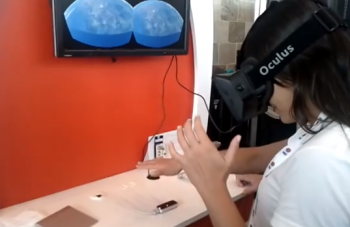
Is Android the future of Oculus Rift?
In my entire life, there is one moment from a technology perspective that stands heads and shoulders above the rest purely in terms of “wowing” me: the Leap Motion + Oculus Rift + Google Earth demo set up at I/O earlier this May. Essentially, you put on the immersive VR headset, where you could see the world around you via Earth. Using Leap Motion, you could move around, and look in any direction by just moving your head.
Simply put, you were Superman. I did in fact move out towards the edge of the Earth’s atmosphere and then dive back down quickly. It was insane, it took me almost half an hour to get my sense of balance back and I almost throw up just picturing that Baumgartner moment in my head. The Oculus Rift, for all its exceptional qualities, clearly has some problems to solve.
From a technological perspective, one of the crucial ones that it needs to is how to get rid of the wires that actually provide the content displayed on the mount. As something that is aimed towards gaming, it needs a powerful machine behind it, and a PC is perfect for that. However, John Carmack, the CTO of Oculus Rift, mentioned in an interview with Engadget that Android might provide the perfect compromise for those wanting an untethered experience.
It makes perfect sense: with Google Glass and a few other projects, Android is already powering a few head-mounted displays with the only difference with Oculus Rift being that they aren’t as intrusive, with Oculus needing to take over your complete view. However, it’s Android, and Oculus Right can make any change they need to so as to provide the optimal experience.
At moments like these I can’t help but be grateful that people like Farhad Manjoo (who thought Google should save Android by close-sourcing it) are nothing more than writers and have no real power in the world. Would a closed-source Android have been better for Google? Potentially. However, are the trade-offs worth it considering what it allows everyone else to achieve? Most certainly.
[Engadget]